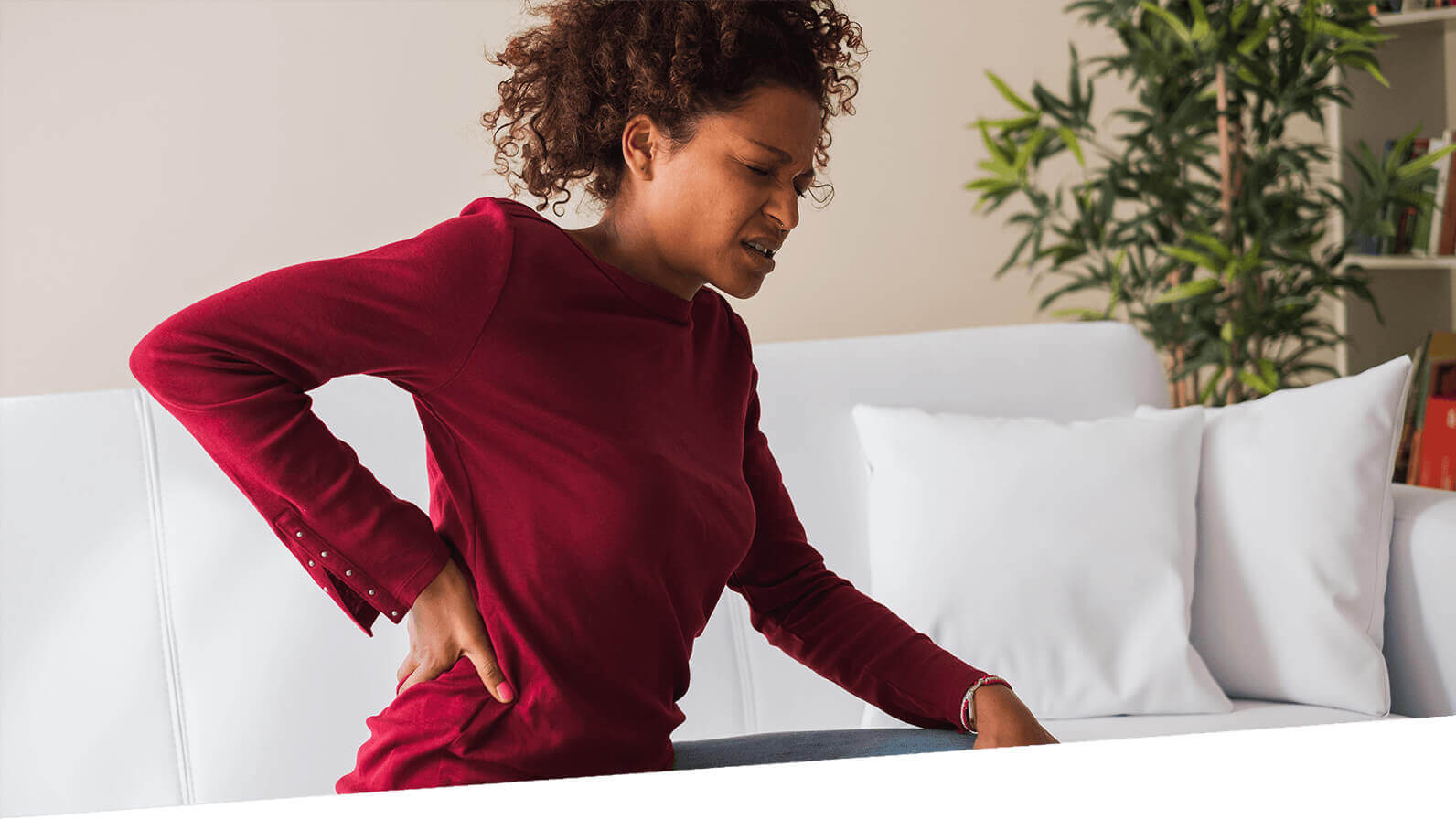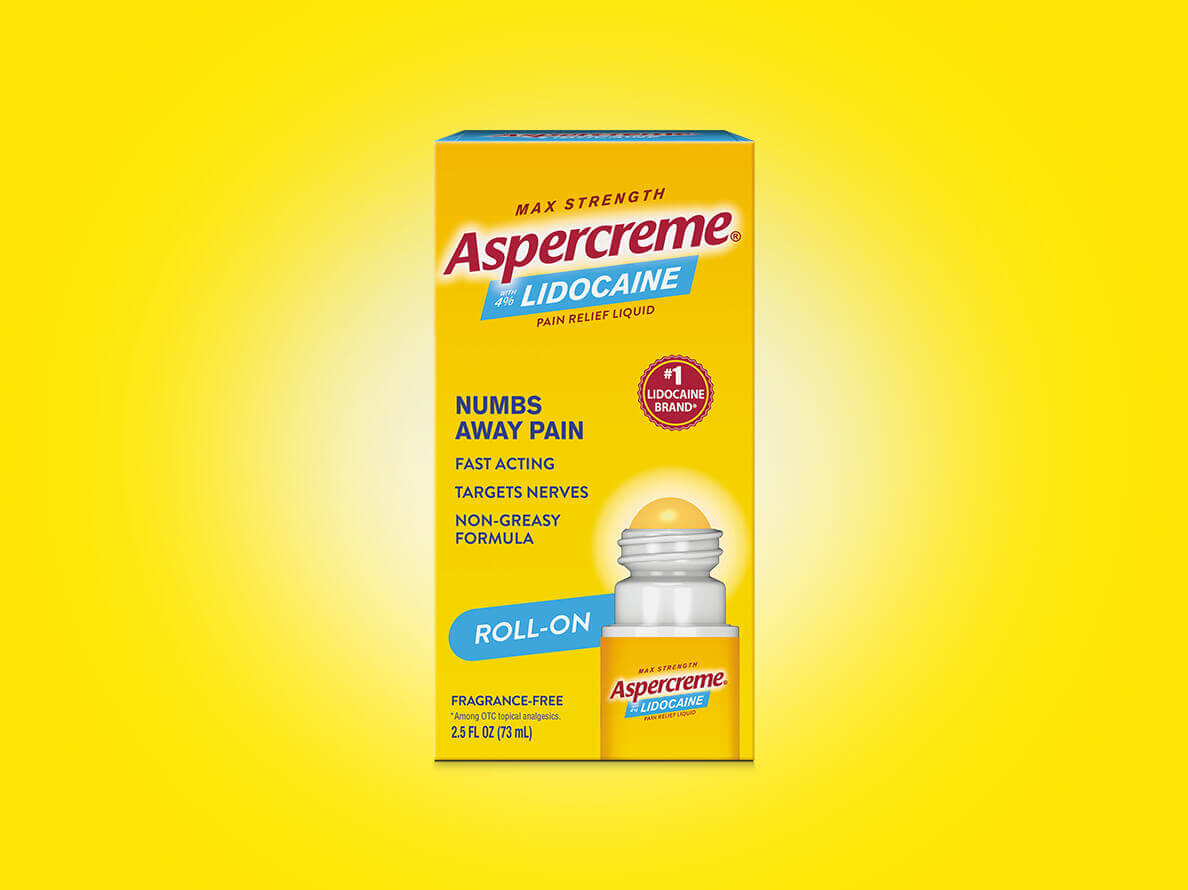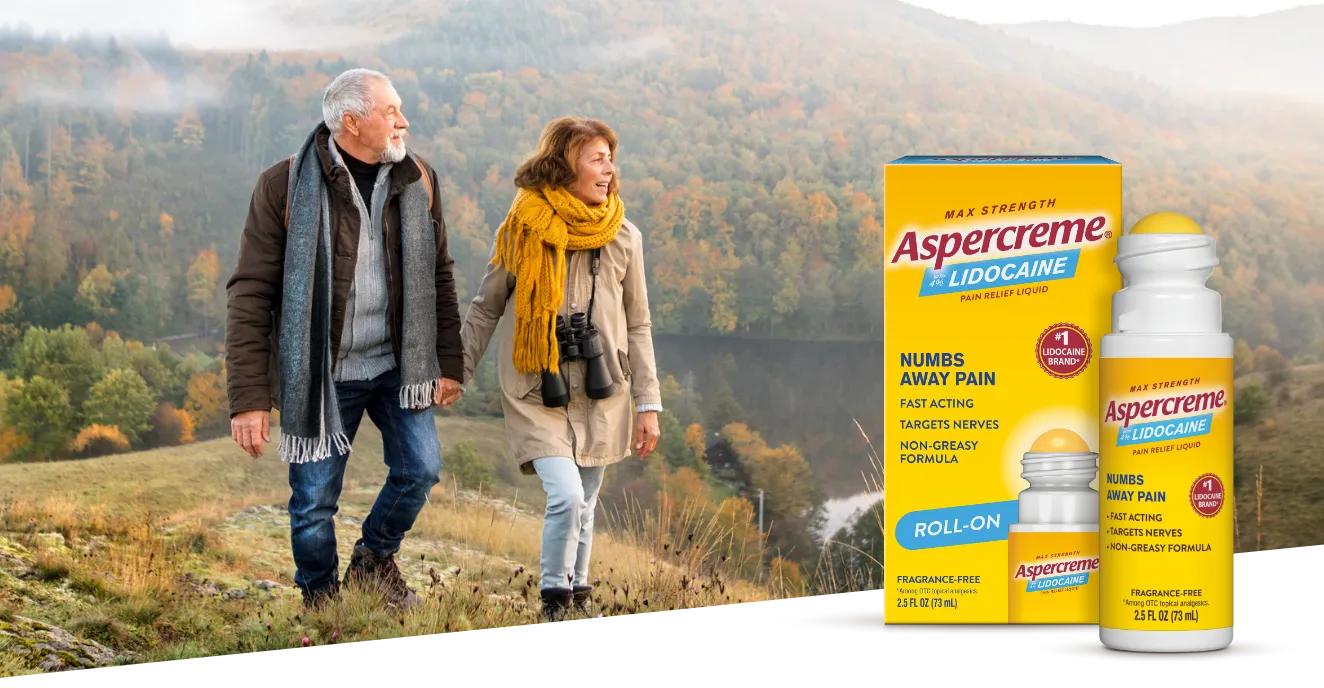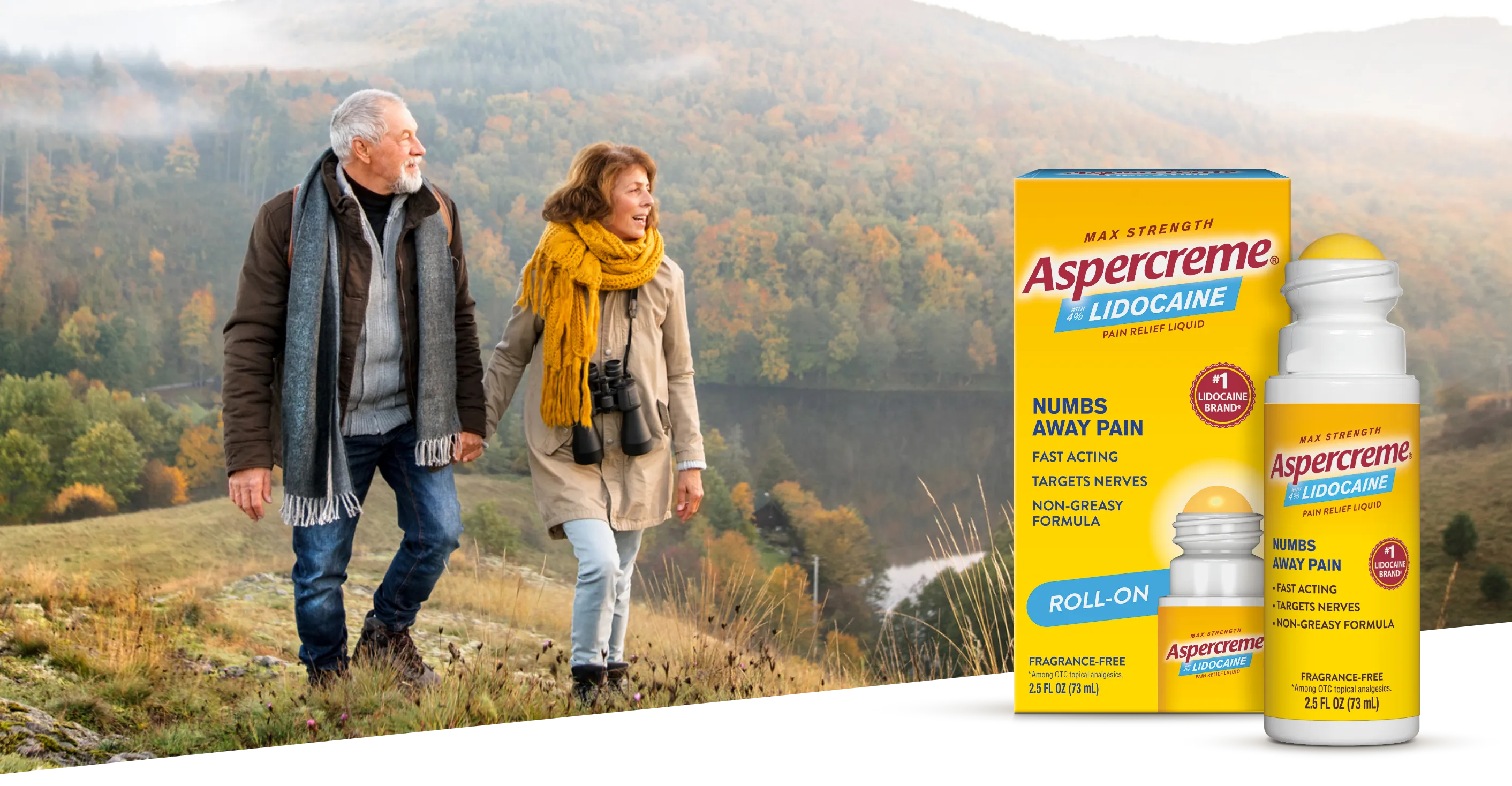.png)
TARGETED PAIN RELIEF IN MANY FORMS
Aspercreme® products are made to provide powerful and effective pain relief. Our core pain relievers contain maximum-strength lidocaine among over-the-counter topical analgesics. And our Arthritis Pain Relief Gel has prescription-strength diclofenac for proven relief from the pain caused by arthritis.
Our full product line includes a wide variety of forms and applicators. Each is carefully designed to deliver relief right where you need it most.
On This Page You Will Learn About:
Understanding How Pain Works
Pain is a subjective experience, believed to be made up of two complementary aspects: one a localized sensation in a specific body part, the other an unpleasant feeling that accompanies actions taken to alleviate the experience.1
Pain is initially sensed by pain receptors, which are nerve endings that only respond to physical damage or the potential for damage. These receptors send signals to the spinal cord by a nociceptor, which acts as a pain relay. From there, further signals are sent to your brain, which helps you process and react to the pain.1
Aspercreme® products help by letting you apply topical relief directly where you are experiencing pain.
.jpg)
Start By Being Aware Of The Things That Cause Pain.
Psychological factors can loom large with lower back pain, facial pain, and headaches.1 But here is a quick look at some sources of everyday pain. The kind of pain you get from bumping your elbow on the counter, straining your back lifting a heavy box, or pulling a muscle on the basketball court.
Injury
Impact And Bruising
You get bruises when small blood vessels near the skin’s surface are broken by impact or injury. The blood leaks and creates that familiar black-and-blue bruise. After a couple of days the blood is usually reabsorbed and the mark disappears. As we get older, however, our skin becomes thinner and loses some of the protective layer that helps cushion blood vessels and prevent bruising.2
Sprain
You get a sprain when ligaments — which connect bones to bones — are stretched or torn. You could feel pain, notice swelling or bruising, or experience limited mobility. Treat minor sprains with rest, ice, compression, and elevation. Severe sprains sometimes require surgery to repair torn ligaments. See a doctor if you can’t move or bear weight, experience excessive pain, or feel numbness in the injured area.3
Strain
Strain describes an injury to a muscle or to the band of tissue that attaches a muscle to a bone. Similar to a sprain, you can help prevent a strain with regular stretching as well as strengthening exercises.4
Muscle Soreness
Intense physical activity like exercise can put stress on your muscles that causes soreness. Athletes spend countless hours training to become the best. But if your training program is less than professional grade, you'll want to take it slow, warm up thoroughly, and ease into your longer workouts.4
Other ways to avoid muscle soreness include:4
Stretch after you work or play
Remain active; sometimes it helps to train through discomfort
Use ice to reduce swelling and inflammation
Use heat to eases muscle strain
Take a day or two off if it feels worse
Arthritis And Joint Pain
Arthritis pain affects millions of people in the US – nearly 1 in 4 adults. The most common form of arthritis is osteoarthritis in the knee and hip.5
Physical activity can help reduce arthritis pain, and greatly enhance the arthritis sufferer's quality of life. Walking, biking, and swimming are all effective ways to ease arthritis pain. Regular exercise has other benefits as well, including reduced anxiety and improvements in both mood and physical function.5
See What Makes Aspercreme® Work
Aspercreme® selects ingredients to provide topical solutions for the temporary relief of pain.
Find The Type Of Aspercreme® That’s Right For You

Whether you have lower back pain, a sore knee, or painful feet, there’s an Aspercreme® formula that's right for you.
Diclofenac Gel
The topical gel formula lets you target pain right at the source, giving you prescription strength relief without a prescription. Triple effect of relieving the pain of arthritis, improving mobility, and reducing stiffness.
Full prescription strength
Reduces inflammation
Targets pain directly at the source
Aspercreme® products:
Lidocaine Patch
The adhesive patch is flexible, easy to apply and remove, and provides maximum-strength lidocaine available without a prescription.* Other advantages of using a patch include:
Targets localized pain
Convenient
Aspercreme® products:
Lidocaine Spray
Aspercreme® spray is ideal for targeting those hard-to-reach areas. Other advantages of using a spray include:
Cover small or large areas
No-mess application
Dries instantly
Aspercreme® products:
Lidocaine Cream
Familiar and popular form. Advantages of using a cream include:
Apply directly to painful areas
Non-greasy
Portable package
Aspercreme® products:
Aspercreme® Pain Relieving Cream with Lidocaine
Aspercreme® Lidocaine 3-in-1 Foot Pain Cream
Lidocaine Roll-on
Smooth, liquid form with a precision roller ball allows you to apply medicine directly to sore spots. Aspercreme® roll-ons are available in essential oil scents as well as original unscented. Advantages of using a roll-on include:
Convenient packaging
Highly portable
Easy to use
Aspercreme® products:
Aspercreme® Lidocaine Fragrance-Free Pain Relief Roll-On
Aspercreme® Lidocaine Pain Relief Roll-On With Essential Oils
*Among OTC topical analgesics.
Don’t Let Pain Get In Your Way
Aspercreme® offers a full range of innovative topical solutions to help relieve everyday pain. Aspercreme® with Lidocaine works fast to numb away the pain, while our diclofenac gel provides full prescription strength arthritis pain relief.
Enjoy doing all the things you love, and make the most of each day, without worrying about aches and pains or discomfort.
RELATED PRODUCTS
References
1. NCBI, editors. The Anatomy and Physiology of Pain, NCBI (ncbi.nim.nih.gov), 1987.
2. Mayo Clinic Staff, editors. Easy bruising: Why does it happen, Mayo Clinic (mayoclinic.org), March 11, 2020.
3. Mayo Clinic Staff, editors. Sprains, Mayo Clinic (mayoclinic.org), September 25, 2020.
4. Jason Howland, editor. Managing muscle soreness, Mayo Clinic (mayoclinic.org), February 2, 2018.
5. Centers for Disease Control and Prevention (CDC), Editors. Joint Pain and Arthritis, CDC (cdc.gov), May 22, 2020.
.jpg)
.jpg)
%20(1).jpg)
.png)
.png)
.png)



